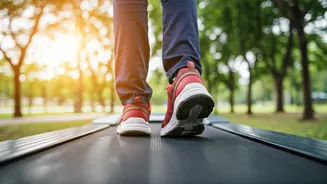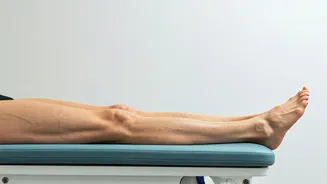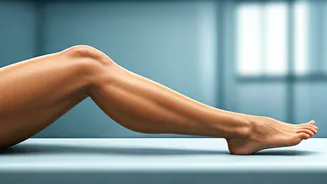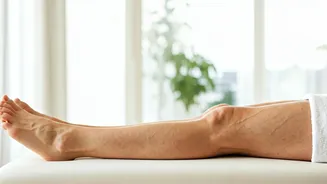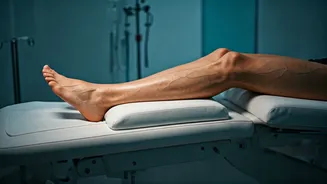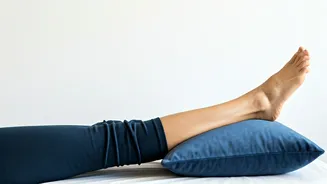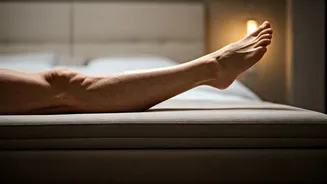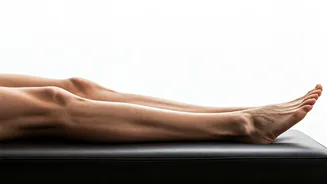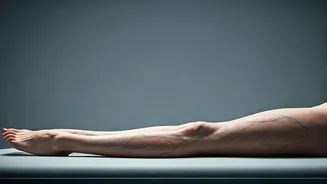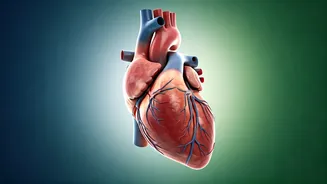Boosting Blood Flow
Leg elevation is celebrated for its ability to improve blood circulation, an essential function in the human body. When your legs are elevated, the force
of gravity assists blood in returning to your heart more efficiently. This can reduce the burden on your veins and heart, particularly in the lower extremities. This practice is most effective when the legs are elevated above the level of the heart. Improved circulation means better delivery of oxygen and nutrients to tissues and organs throughout the body, fostering better overall health and functionality. Implementing regular leg elevation is a simple yet effective way to maintain healthy blood flow, enhancing your overall well-being. This can be achieved while sitting, lying down, or resting, with the aim of promoting a healthier circulatory system.
Easing Varicose Veins
Varicose veins, often appearing as swollen, twisted veins, can cause discomfort and aesthetic concerns. Leg elevation offers a practical, non-invasive approach to managing these. By elevating your legs, you reduce the pressure in the veins, helping blood flow more freely and preventing pooling. This helps alleviate symptoms like aching, swelling, and heaviness in the legs, which are commonly associated with varicose veins. Regular leg elevation, combined with other lifestyle adjustments such as exercise and compression socks, can significantly improve your condition and reduce the progression of varicose veins. Therefore, it's a valuable tool for those dealing with this common condition, making daily life more comfortable and less burdened by pain or discomfort.
How To Practice
Implementing leg elevation is simple and can be incorporated easily into your daily routine. To practice, lie down comfortably and raise your legs. You can use pillows or cushions to support your legs, ensuring they are elevated above the level of your heart. The recommended time for elevation is around 10 minutes, but even shorter periods can provide benefits. You can do this while watching TV, reading a book, or during your lunch break. Consistency is important; making leg elevation a regular practice can lead to sustained benefits. Pay attention to how your body feels and adjust the duration and frequency according to your needs. This makes leg elevation a flexible and accessible practice for everyone.
Other Health Benefits
Beyond circulation and varicose veins, leg elevation offers several other health benefits. It helps reduce swelling in the legs and ankles, which can be caused by prolonged standing or sitting, or by medical conditions like edema. Elevating your legs can also ease muscle fatigue, promoting relaxation and recovery after physical activity. For people with minor injuries, leg elevation can speed up the healing process by reducing inflammation and improving blood flow to the affected area. It contributes to overall well-being by reducing discomfort and promoting relaxation. Therefore, it's a simple and effective practice that supports both physical recovery and daily comfort, making it a valuable addition to your health routine.
Scientific Backing
The benefits of leg elevation are supported by scientific research, particularly regarding its impact on circulation. Studies have shown that elevating the legs assists venous return, reducing the pressure in the veins and promoting healthy blood flow. This can alleviate symptoms associated with venous insufficiency. Research into leg elevation shows benefits for people with varicose veins. Medical professionals often recommend leg elevation as part of a comprehensive treatment plan for various circulatory conditions. While leg elevation is a straightforward practice, its effectiveness is backed by a growing body of scientific evidence. Therefore, it's a safe and beneficial practice to incorporate into your health routine, supported by scientific evidence for tangible results.


